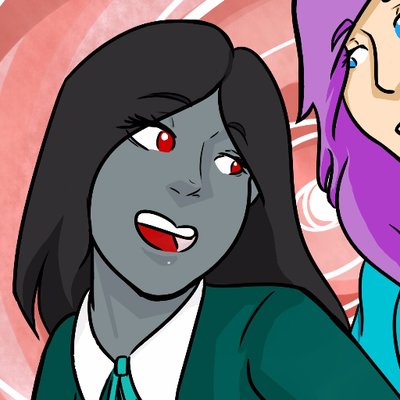Goth
Shadows paint us, darkness take us.Goths are a lifestyle-based subculture of largely undead and undead-adjacent species that began in Gothadrun centuries ago, as an expansion of the traditional gloomy style donned by many of the expired. It is not merely the fashion they wear, nor the music they listen to: to be goth is to embrace a dark, diverse culture that lives on the razor's edge between life and death.
Culture
Culture and cultural heritage
Well, there are a few small barriers between us, I think. Assuming you do, in fact, want to keep your soul.Goth culture is well-summarised in its varied, sprawling nature, centred on bonds of darkness, kindness, cynicism, and death. To break it down further is the work of lifetimes; there are simply too many subcultures of the larger subculture. Sometimes, these various cultures do clash, especially when their key reasons for separating come into stark relief against one another.
Religion in Gothic Culture
With so many undead present in gothic circles, religion is an extremely touchy subject. Undeath is condemned by most religions; pious individuals turned undead oft find themselves abandoned by their gods, and are jaded by the experience. Commonly, this is how some find gothic culture. Though many goths wear religious motifs, it is rare for them to be worn with meaning - the symbols are enough for an aesthetic, and most prefer for them to remain that way.Ideals
Beauty Ideals
It starts with black. Add what you like after that.Beauty, for goths, is not in conventional beauty norms. Superficially, it is in unconventional outfits, in the use of spikes and skulls, and in the dark makeup and clothing they wear. Beneath the surface, it is about intelligence, understanding, and kindness.
Gender Ideals
What is gender but yet another expectation?
I'm going to suggest ignoring half of what's on this page. Come along to a Goth Club meeting if you're actually interested. Half of this is bait for the vampires.
The Dark Arts
The Dark Arts, as they are so boringly named, are a variety of areas of study collected into one tidy bundle. The ones most people care about are magical and scientific, respectively; though music, architecture, and the like do still fall under the umbrella, they are usually more mundane. Necromancy, illusion, and enchantment are the most common schools of magic used in the Dark Arts. Combined with alchemy and herbalism, the Dark Arts are often a path of subtle poisons, alluring whispers, and beautifully horrific rites that make use of death. Most blood magic spells have their roots in gothic traditions. Only fools and paladins (if they aren't considered the same thing) would assume the Dark Arts are entirely evil. Many poisons only have antidotes because of gothic practitioners, and blood magic has proven highly effective in aiding healing processes and tracking the lost. A number of poultices first invented by practitioners of the Dark have made it into common, everyday use; the telltale signs are the use of rich berry colours and dark leaves, and the bending of poison for good. This does not mean all poultices resembling this process are of dark origin! The sciences are where gothic traditions become more interesting. Anatomy, chemistry, and even - bizarrely - physics are practiced in different ways by those deep in gothic tradition; it is said, perhaps humorously, that their darkness is such that it warps all it touches. But to delve too deeply into the Dark Arts here would be an excessive risk. After all - we can't have you, dear reader, becoming too invested.We have so many more things to teach you about what it truly means to be a goth, but where's the fun in reading them all at once? Patience, sweetling. It's more dramatic if we wait.
















It can't rain all the time.
Primary author of the NobleDark, Fantasy setting Realms of Ravare.
The sky won't fall forever.